A mass m in attached to a mass less string and swings in a horizontal circle, forming a conical pendulum, as shown in the figure. The other end of the string passes through a hole in the table and is dragged slowly so as to reduce the length l. The string is slowly drawn up so that the depth h shown in the figure becomes half. By what factor does the radius (r) of the circular path of the mass m change?
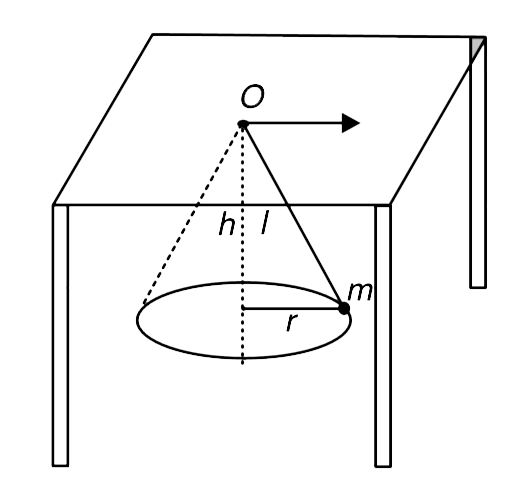
The correct Answer is:(12)4
Topper's Solved these Questions
Similar Questions
A particle of mass m is doing horizontal circular motion with the help of a string (conical pendulum) as shown in the figure. If speed of the particle is constant then,
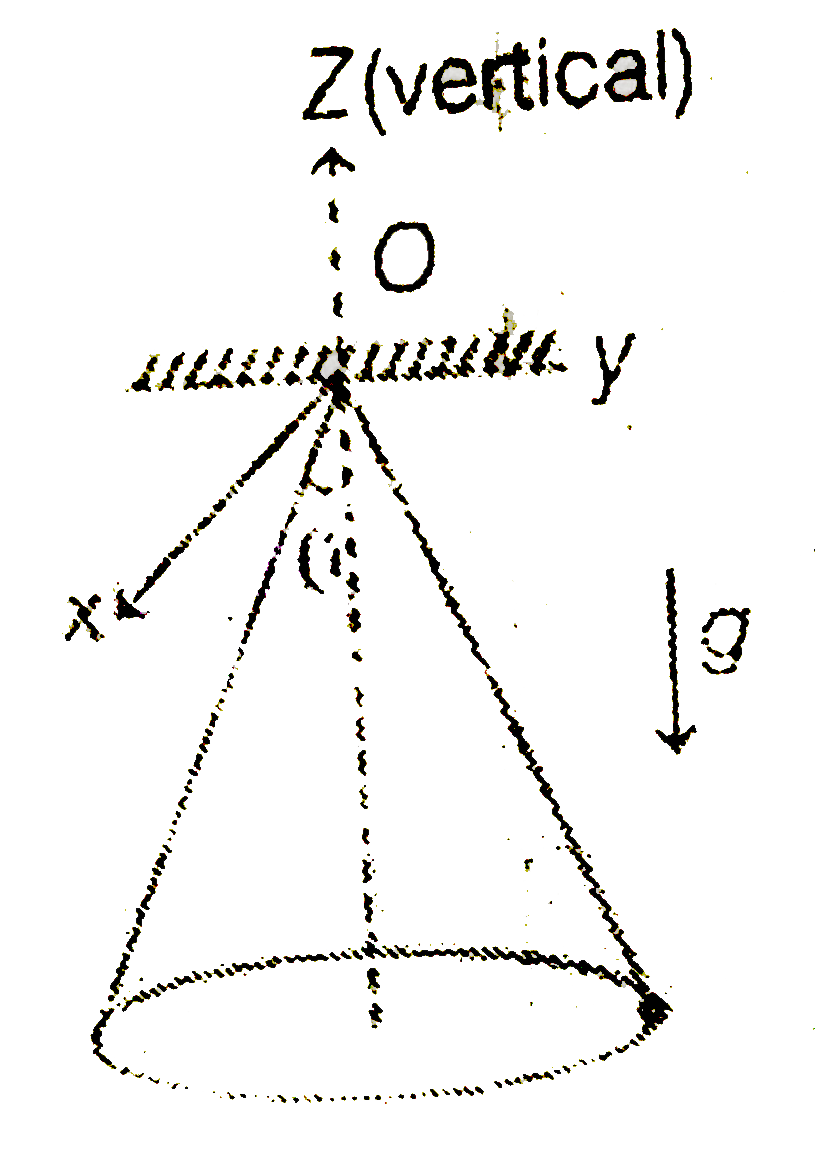
View SolutionTwo partical tied to different strings are whirled in a horizontal circle as shown in figure. The ratio of lengths of the string so that they complete their circular path with equal time period is:
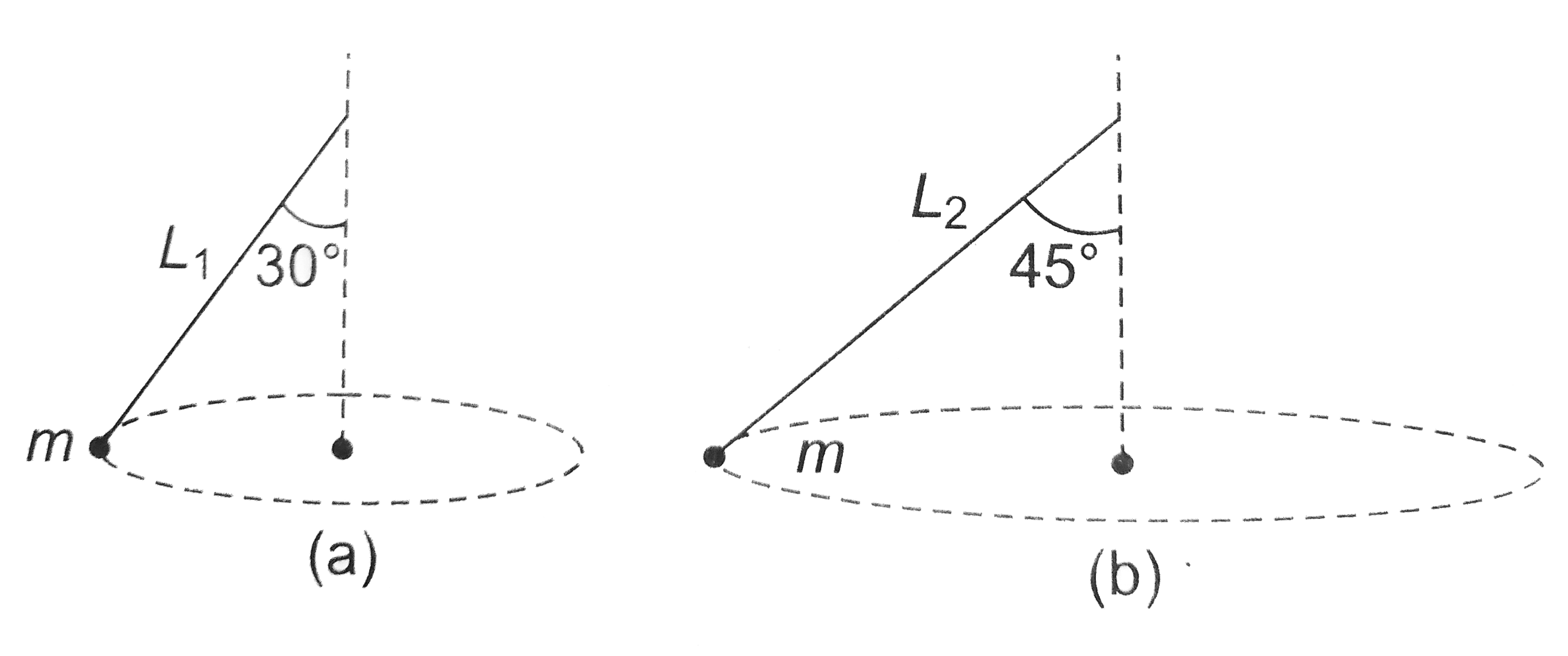
View Solution
Knowledge Check
A particle of mass m is doing horizontal circular motion with the help of a string (conical pendulu) as shown in the figure. If speed of the particle is constant then,
 Athe angular momentum of the particle about O is changingBmagnitude of angular momentum about O remains constantCz component of the angular momentum remains conservedDz component of torque is always zero.
Athe angular momentum of the particle about O is changingBmagnitude of angular momentum about O remains constantCz component of the angular momentum remains conservedDz component of torque is always zero.Two partical tied to different strings are whirled in a horizontal circle as shown in figure. The ratio of lengths of the string so that they complete their circular path with equal time priod is:
 A√32B√23C1DNone of these
A√32B√23C1DNone of theseA horizontal rod of mass M and length L is tied to two verticle string symmetrically as shown in the figure. One of the strings at end Q is cut at t=0 and the rod starts rotating about the other and P then
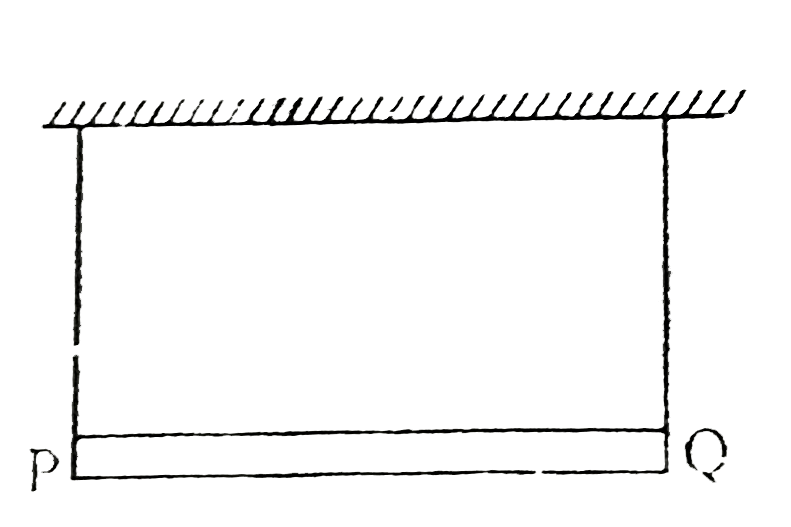 AAt t=0 angular acceleration of rod about P is 3g/2LBAt t=0 angular acceleration of rod about C.M. of rod is 3g/2LCAt t=0 acceleration of C.M. of rod is 3g/4 in downward direction.DAt t=0 tension in the string at P is Mg/4
AAt t=0 angular acceleration of rod about P is 3g/2LBAt t=0 angular acceleration of rod about C.M. of rod is 3g/2LCAt t=0 acceleration of C.M. of rod is 3g/4 in downward direction.DAt t=0 tension in the string at P is Mg/4
A block of mass m is tied to a string of length L and the assembly is kept on a smooth horizontal table as shown in the figure. Now the other end of the string is moved with a constant velocity v0ˆj. (xy plane is the plane of the table) Then
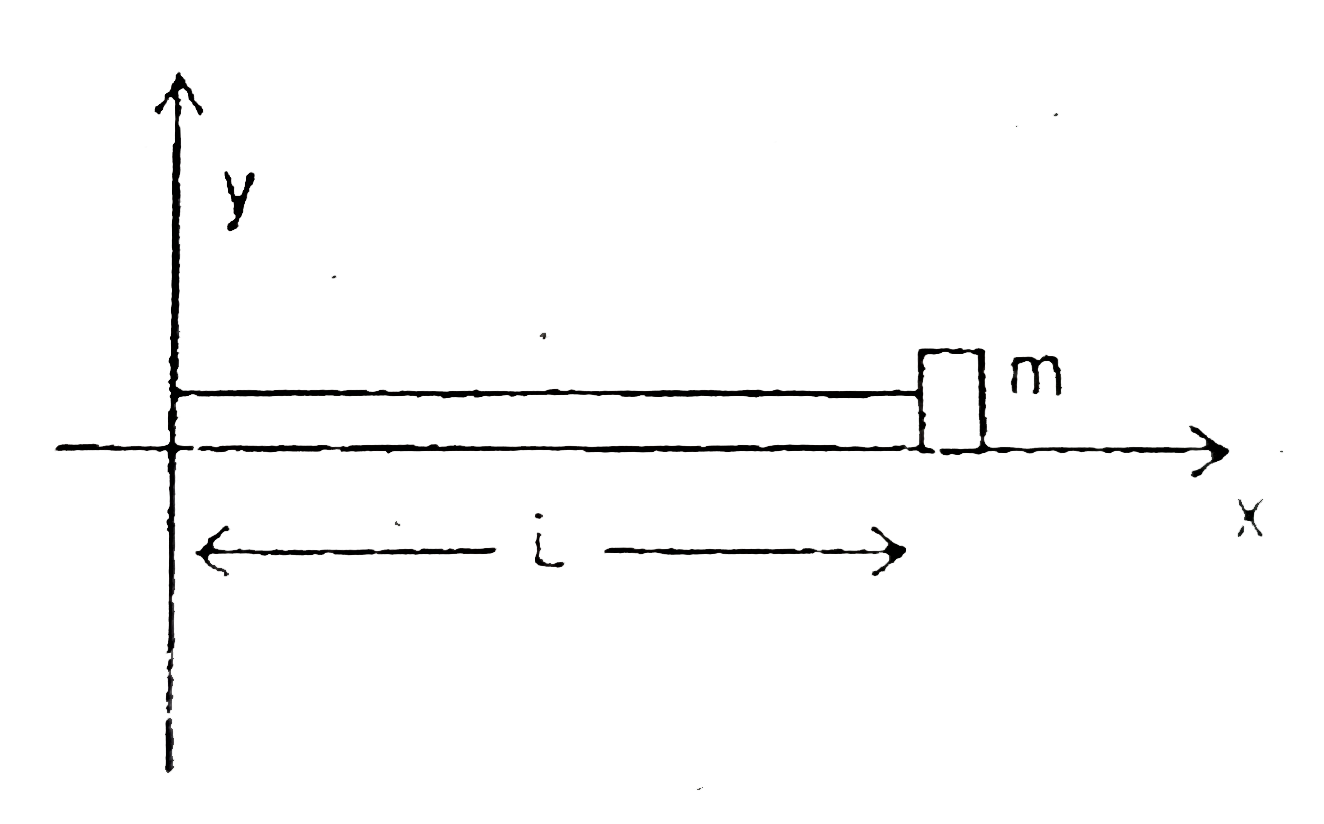
View SolutionA horizontal rod of mass M and length L is tied to two verticle string symmetrically as shown in the figure. One of the strings at end Q is cut at t=0 and the rod starts rotating about the other and P then

View SolutionA uniform rod of length l and mass m is hung from, strings of equal length from a ceiling as shown in figure. Determine the tensions in the strings?
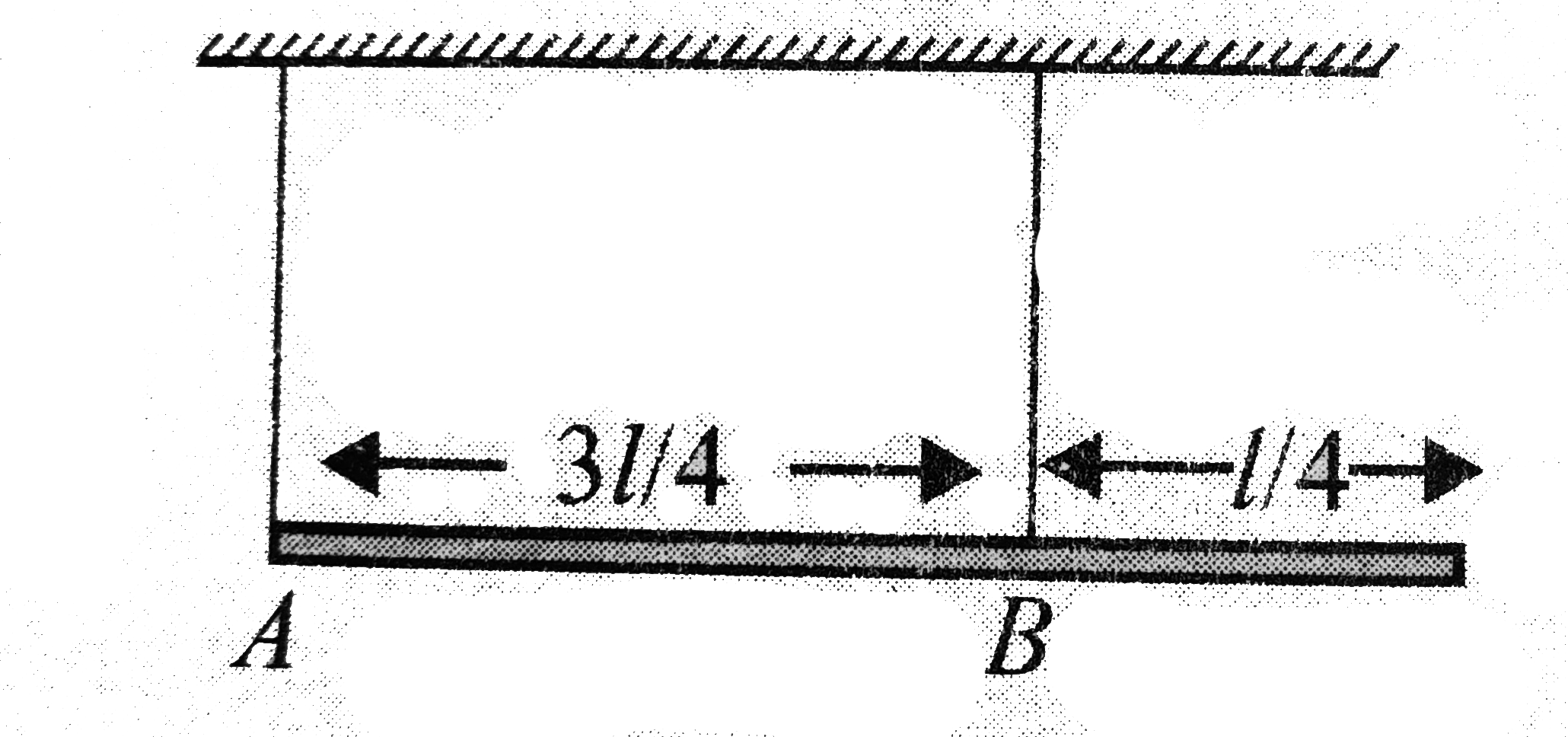
View SolutionA uniform rod of length l and mass m is hung from, strings of equal length from a ceiling as shown in figure. Determine the tensions in the strings?

View SolutionA stone of mass m tied to a string of length l is rotated in a circle with the other end of the string as the centre. The speed of the stone is v. If the string breaks, the stone will move
View Solution
